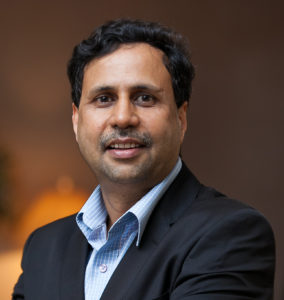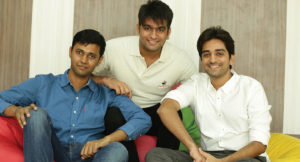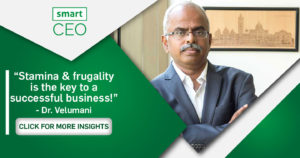How the diagnostics firm clocked revenues of Rs. 662 crore in FY 2015 from Rs. 43 crore in 2005

The healthcare industry in India is currently valued at Rs. 4,20,000 crore and of this, diagnostics comprises a near nine per cent or Rs. 37,000 crore. This is a sub-segment that has been growing at 15 per cent to 16 per cent year-on-year, however it is plagued by the lack of organisation and is dominated by small, localised players.
Dr Lal PathLabs was established in 1949 as one of those small labs in New Delhi by Late Dr. Major SK Lal. Today, the company has a catalogue of 1,110 test panels, 1,934 pathology tests and 1,561 radiology and cardiology tests to cover the range of routine and specialised diagnostics services. In December 2015, it declared a secondary IPO which received bids for a total of 27.12 crore shares, where its investors (Westbridge Capital and TA Associates) exited by selling to the public. The company has a healthy cash flow to meet its current plans and will think of a full-fledged IPO or further investments a little into the future. In the meanwhile, it aims to disrupt this unorganised sector to become more organised, with focus on quality and timely delivery.
Dr. Om Manchanda, an IIM-A alumnus with 15 years of experience in the healthcare industry, was drafted in as CEO in 2008 to manage the scale up phase. His key tasks revolved around setting up robust people processes, in addition to revenue growth.
On a professional path
The company, headed by Dr. Arvind Lal since 1977, received funding from Bengaluru- based PE investor, Westbridge Capital, in 2005. Subsequently, Dr. Om Manchanda, an IIM-A alumnus with 15 years of experience in the healthcare industry, joined as COO and became the CEO in 2008. This step towards professional management was mandated by the investors and Dr. Manchanda’s primary task at the time was to introduce processes and systems along with automation. “It was a well-established organisational culture that we had to counter at that time and that was a big challenge,” recollects Dr. Manchanda.
In a little over six years, the company’s turnover grew from Rs. 43 crore in FY 2005 to Rs. 237 crore in FY 2011. The company declared a turnover of Rs. 662 crore for FY 2015 and for the first nine months of FY 2016, it has clocked Rs. 574 crore. “This is on par with our expected 20 per cent growth year-on-year,” says Dr. Manchanda.
At the heart of things
Dr Lal PathLabs, whose primary focus is pathological diagnostics, has established a hub and spoke model. The laboratory forms the hub with collection centres servings as its spokes, collecting samples at the collection centres spread out across geographies. This provides centralised testing and simultaneous access to markets with benefits of economies of scale and the ability to compete with smaller, localised players. Not just that, with a centralised facility there is no letting up on quality.
In addition to its labs at convenient points, the company also has a National Reference Laboratory in New Delhi and plans to start similar facilities in Kolkata and in Lucknow. The company has its own logistics system for intra-city transportation of collected samples. For inter-city, it depends on third party service providers. Dr Lal PathLabs assures a timely delivery of reports, which is one of the three pillars of its service assurances. The first is convenient collection, including from patient homes. The second is quality. The clinical laboratories participate in several externally administered quality surveillance programmes, including the National Accreditation Board for Testing and Calibration Laboratories prescribed programme. As of June 30, 2015, 27 of its laboratories were accredited by the NABL in accordance with ISO 15189.
Currently, the company has 172 labs, 1,500 patient service centres and 7,000 pickup points. It also has collection centres in 13 cities across South Asia, Middle-East and Africa. At this stage, it plans to consolidate business at all locations and focus on strengthening its presence in the Indian marketplace. Of course, while a large portion of its business is customer-facing, another part of Dr Lal PathLabs’ business is, being the outsourcing partner for hospitals and smaller labs.
The M&A Lookout
In the last 10 years, the company’s team has grown from 400 to 4,000. In accordance to Dr Lal PathLabs’ growth plans, infrastructure and strength are also expected to grow by 15 per cent to 20 per cent. Growing organically has been one of its key strategies, but now, the company plans to grow through mergers and acquisitions. Another key area is to undertake hospital laboratory management, a natural extension of it being an outsourced testing partner. Currently it has 14 such hospital labs that it is managing and believes there is a huge opportunity there.
To be able to effect its desired disruption of changing the unorganised sector to organised, Dr. Manchanda believes Dr Lal PathLabs will have to grow faster than the market in a sustained manner and its inorganic growth plans are one way of reaching that goal.
What’s next?
From a family run, small lab, Dr Lal PathLabs has grown significantly today, especially across the Northern regions. It has 172 labs, 1,500 patient service centres and 7,000 pickup points. It manages laboratories at 14 hospitals and aims to grow in this area. Apart from increasing its own labs and collection centres, the company also plans to grow inorganically through mergers and acquisitions. Dr Lal PathLabs received investments from Westbridge Capital and TA Associates, who exited using the IPO route in December 2015. The company has been sustaining a CAGR of 15-20 percent and expects to not only maintain it, but also surpass it to fulfil its vision of organising this highly disorganised diagnostics segment.




